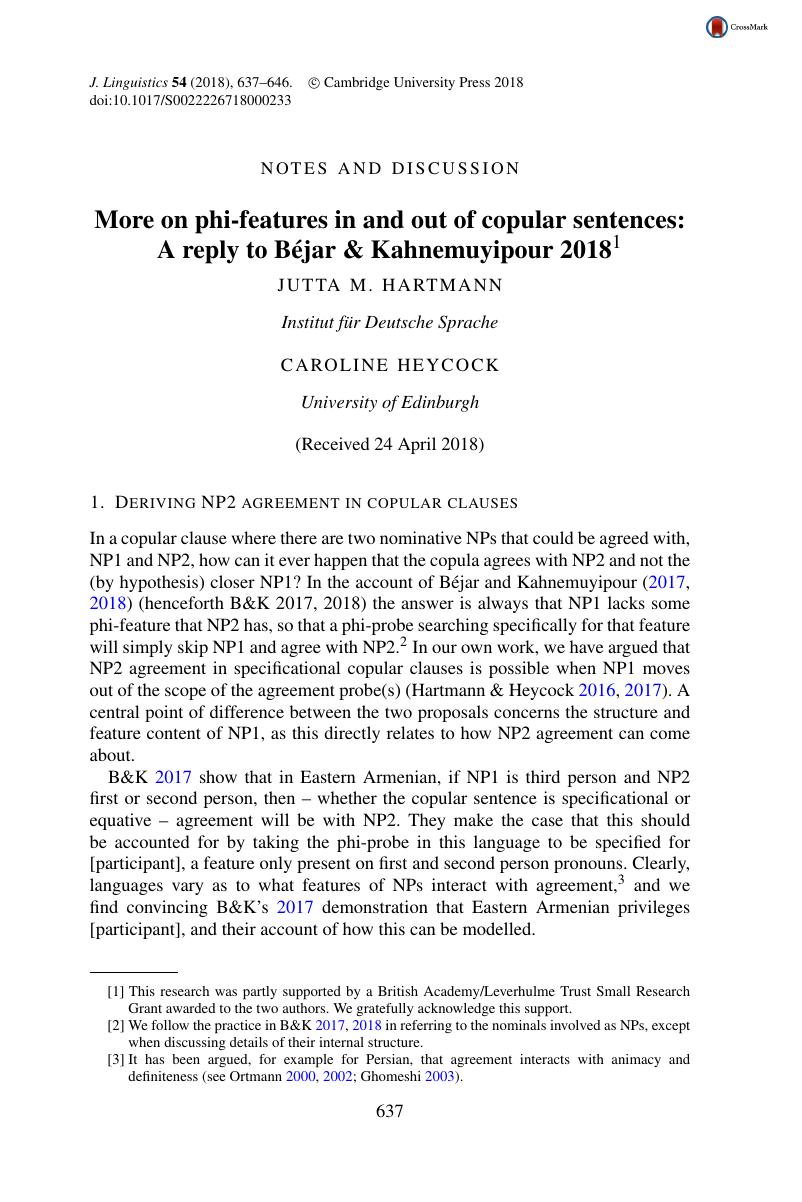Crossref Citations
This article has been cited by the following publications. This list is generated based on data provided by Crossref.
Hartmann, Jutta M.
and
Heycock, Caroline
2020.
(Morpho)syntactic Variation in Agreement: Specificational Copular Clauses Across Germanic.
Frontiers in Psychology,
Vol. 10,
Issue. ,
Heycock, Caroline
2020.
The Wiley Blackwell Companion to Semantics.
p.
1.
Hartmann, Jutta M.
and
Heycock, Caroline
2023.
Person effects in agreement with Icelandic low nominatives: An experimental investigation.
Natural Language & Linguistic Theory,
Vol. 41,
Issue. 3,
p.
1029.


